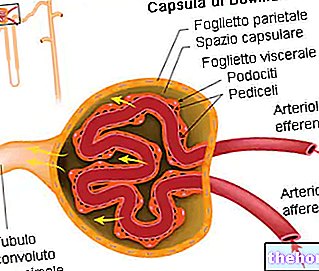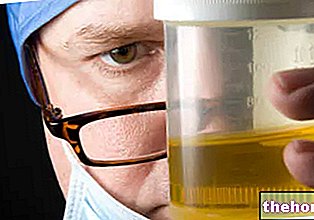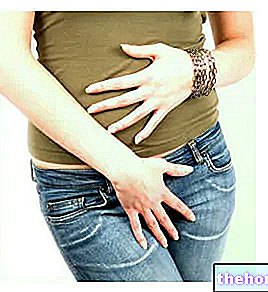What is a hydropinic cure?
Drinking cures are defined as therapies based on the ingestion of mineral waters with peculiar curative properties, useful in the treatment of some disorders or particular affections. prescribed by the doctor, since in extreme cases - strange as it may seem - water can be even lethal.
Types of Mineral Waters
In the "article dedicated to" the label of mineral waters, we have seen how the numerous properties of spring waters are linked to the inorganic ions contained in them; the concentrations of these minerals, shown on the label of each bottle, classify the various waters in certain categories with health implications useful in hydropinic treatments:
TYPE OF MINERAL WATER
FIXED RESIDUE
Minimally mineralized waters
<50 mg / L
Waters with low mineral content
50 - 500 mg / L
Mid-mineral waters
500 - 1000 mg / L
Water rich in mineral salts
> 1000 mg / L
Bicarbonate mineral water - Bicarbonate content:
> 600 mg / L
Calcium mineral water - Calcium content:
> 150 mg / L
Chlorinated mineral water - Chlorine content:
> 200 mg / L
Ferruginous mineral water - Iron content:
> 1 mg / L
Fluorinated mineral water - Fluorine content:
> 1 mg / L
Magnesium mineral water - Magnesium content:
> 50 mg / L
Sodium mineral water - Sodium content:
> 200 mg / L
Sulphate mineral water - Sulphate content
> 200 mg / L
Low sodium water - Sodium content
<20 mg / L
CATEGORY
MINERAL WATER
Oligomineral waters with particularly low or even no nitrate content (not exceeding 10 mg / l due to the known risk of causing fetal methemoglobinemia). To increase the intake of mineral salts, considering the increased needs of the pregnant woman, it is advisable to alternate low-mineral water with medium-mineral water, preferring calcium ones.
The advice is similar to those dispensed for pregnancy, with the foresight to drink larger quantities of water to help restore the amount of fluids lost during breastfeeding. The intake of ferrous water alternating with calcium water and low mineral content water may be useful (iron is the only nutrient deficient in breast milk, however compensated by the stocks that the newborn has already accumulated at the time of birth).
Minimally mineralized waters, practically free of mineral salts so as not to alter the nutritional formula, carefully calibrated, of the food. Once again, attention is paid to the quantity of nitrates, which must be zero or extremely low.
Slimming
Oligomineral, to purify the body by promoting the elimination of toxins
Kidney stones
Oligomineral or minimally mineralized, to stimulate diuresis and prevent the formation of stones or facilitate their elimination (water stroke)
Oligomineral or minimally mineralized with low sodium content (2/3 liters per day) → hemodilution of uric acid → stimulation on diuresis → increased urinary excretion of uric acid
Sport
Medium mineral content, with a good amount of calcium, iron, sodium, chlorine and bicarbonate. Taking mineral waters to supplement the same trace elements with hydrosaline supplements is like buying a dress without pockets and then having them added by a tailor: you throw away money!
Hypertension
Low sodium oligomineral, associated with an equally low sodium diet, useful in the initial stages and as prevention in predisposed subjects
Osteoporosis
Mineralized water rich in "bioavailable calcium" (check the presence of this wording on the label)
Gastric acidity
Calcium bicarbonate type mineral water
Anemia
Ferrous mineral water
Caries
Fluorinated mineral water
Salty-sulphate waters (increase the excretion of bile acids with feces)
Constipation
Sulphate water
Hydroponic treatment and kidney stones
The hydropinic treatment recognizes its main fields of application in kidney stones and gastrointestinal disorders. As for kidney stones, the intake of generous quantities of mineral water, or better still minimally mineralized, is able to induce a dilution of urine, stimulating diuresis and urinary elimination of litholiths and gravel, preventing infections and inflammation of the urinary tract, thus opposing the development and growth of stones in predisposed subjects.
The stimulation on diuresis and the antispastic activity of minimally mineralized waters are particularly useful in shortening the expulsive phase during renal colic, saving the patient from further suffering. Furthermore, hydropinic therapy is particularly useful before and after extracorporeal lithotripsy interventions (blasting of the stone with shock waves to induce fragmentation and facilitate its expulsion). However, it is not always advisable to force diuresis by means of the so-called "water shot" (intake of 1-2 liters of minimally mineralized water drunk in half an hour on an empty stomach); the hydropinic intervention is in fact advised ONLY when the dimensions and the localization of the stone are known, which obviously must be mobile and not too large, as well as the morphology and the state of the excretory passages.




























